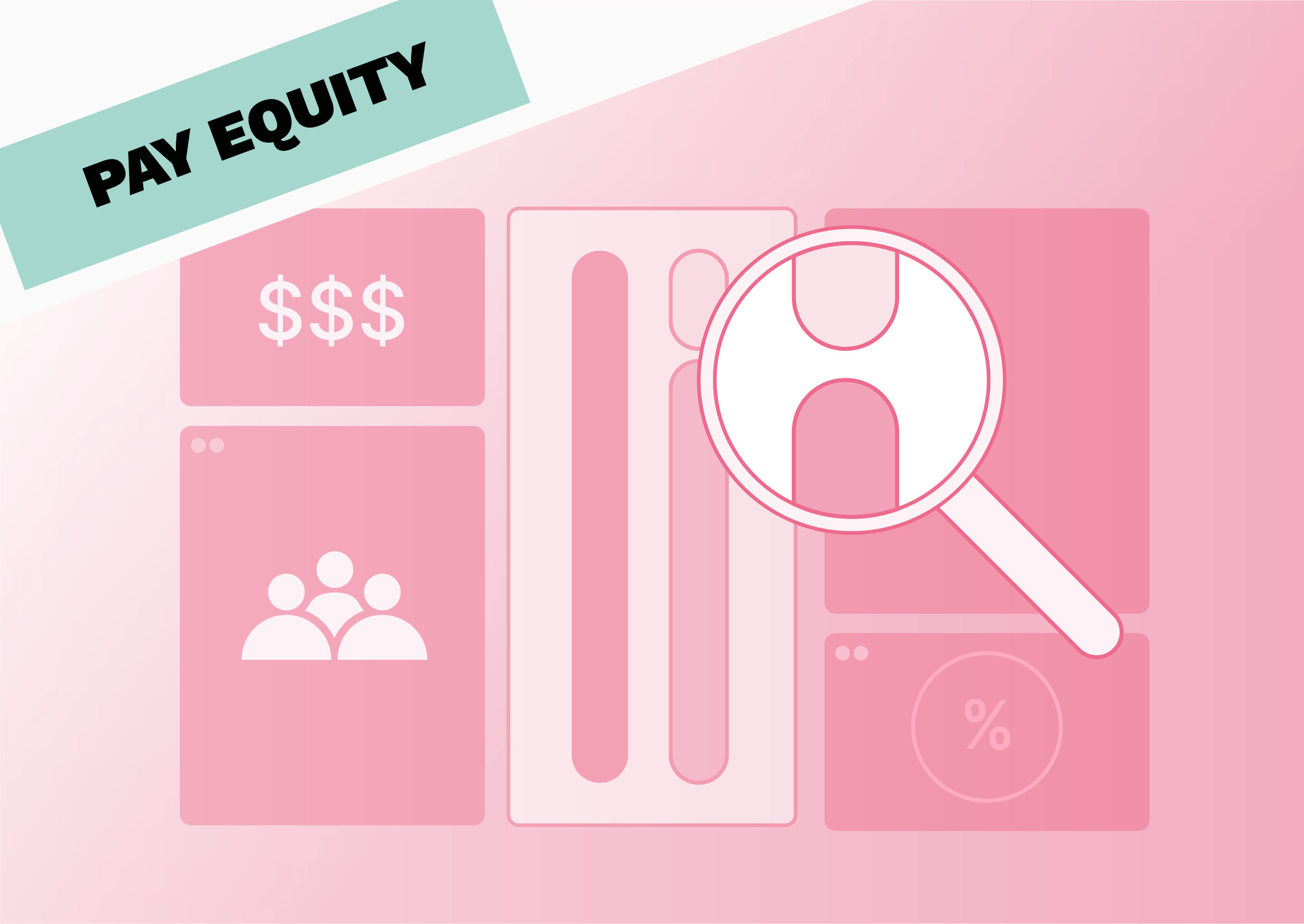The Gender Pay Gap and Pay Transparency
At Figures, our goal is to empower companies to make equitable compensation decisions. We believe that pay transparency is a key driver for closing the gender pay gap, but we needed research to back this up.
That’s why we carried out a study of our customers, to discover how pay transparency and the gender pay gap are linked. Our results showed that we were right — that pay transparency correlates to a lower gender pay gap.
Discover more details, plus the three key strategies that help drive pay transparency within the workplace.
What is the gender pay gap?
This is the relative difference in global compensation for men and women. This can be calculated as both median and average compensations.
At Figures, we consider the base salary, fixed bonus, and on-target bonuses as global compensation.
Our methodology
We surveyed our customer base — made up of 960 companies — how transparent their compensation schemes are. We received a response rate of 51%.
We assessed companies on three criteria:
- Their compensation policy and principles
- Their salary range and grid
- Individual salaries
We then calculated the gender pay gap for each company in two ways:
- Non-adjusted gender pay gap: this compares the salaries of men and women regardless of their roles and location. These criteria can be representative of many gender equality issues that aren’t necessarily directly due to salary discrimination, like the glass ceiling effect that contributes to the lower representation of women in higher-paying roles.
- Adjusted gender pay gap: comparing the salaries of men and women who hold the same role in the same location. On average, there should be no gap between wages.
When possible, we also calculated internal gender pay gaps within each company. It’s harder to obtain adjusted results for this pay gap because both genders aren’t always represented at the same job, level, and location.
Legal constraints also meant that we couldn’t run similar studies based on other types of diversity criteria (including ethnicity, religion, age, social origin, and sexual orientation). We predict the results would be similar, because whatever the criteria, pay transparency forces accountability.
In turn, being accountable drives pay equality and helps to increase fairness overall.
The results
For clarity, we’ve split our results into two different sections — adjusted and non-adjusted.
Adjusted results
Our adjusted gender pay gap analysis showed that transparency drives equal pay:
- Pay gap of 0% for companies with full transparency (compensation policy, salary grid, and individual salaries)
- Pay gap of 2% for companies with transparent compensation policies and salary grids
- Pay gap of 2.4% for companies with a transparent compensation policy
- Pay gap of 3.5% for non-transparent companies

Full pay transparency is still relatively rare. While 59.0% of the respondents to our survey have a transparent compensation policy, only 28.3% have transparent salary grids, and 11.6% have full transparency on individual salaries.
We also examined if the geographical location has a part to play in pay transparency. We discovered that in the UK, France, and Germany, the distribution of companies with transparent compensation strategies and salary grids is fairly similar. But Germany falls behind when it comes to the transparency of individual salaries:
- 14% of respondents in the UK
- 13% of respondents in France
- 7% of respondents in Germany
Non-adjusted results
When we analysed the non-adjusted pay gap results, we discovered a strong correlation between compensation transparency criteria, and closing the gender pay gap. For non-transparent companies, the pay gap is 22% on average. For fully transparent companies, it's a third less, at only 15%.
The most significant strategy for reducing the gender pay gap is having fully transparent individual salaries. This can reduce the gender pay gap by -54%. In comparison, transparent compensation strategies and salary grids have much less of an impact.
When we calculated the internal non-adjusted gender pay gap, we found that transparent companies have a 41% lower internal pay gap than non-transparent companies — an impressive result!
Even for companies with fully transparent pay policies, the non-adjusted pay gaps are still significant. We believe this is a result of having a lower representation of women in higher or c-suite positions.
In the companies that we surveyed, 63% of women have IC1 or IC2 roles, compared to less than 49% of men. While more managerial roles are held by men, the good news is that more transparent companies have more women in executive roles.
.avif)
Transparency drives equitable pay
Having full pay transparency is a key indicator of pay equality. Highly transparent companies have three times lower adjusted gender pay gaps than non-transparent companies. If you want to drive equitable pay at your own company, pay transparency is one of the most effective ways to achieve this.
The most significant strategy for reducing the gender pay gap is having fully transparent individual salaries. Combining this with transparent compensation strategies and salary grids is the best way to move towards equal pay regardless of gender.
While this is great news, there still needs to be more effort toward increasing the representation of women in high-level positions. Doing so will help us move towards gender parity — and a more equitable future.
And don't forget with the upcoming EU Pay Transparency directive, there is never a bad time to begin to monitor your gender pay gap.
For more insights, read our full report on the gender pay gap and pay transparency.
Looking for more resources, tools and content?
That's why we created Figures, you don't need to be a compensation expert, we are. With our an all-in-one compensation platform updated in real-time, expert HR and People insights, we want to make your job more efficient and power more fair decisions.
- Follow us on LinkedIn to never miss an update
- Learn more about compensation and best practices on our blog
- Check out our product tutorials on YouTube
.avif)





